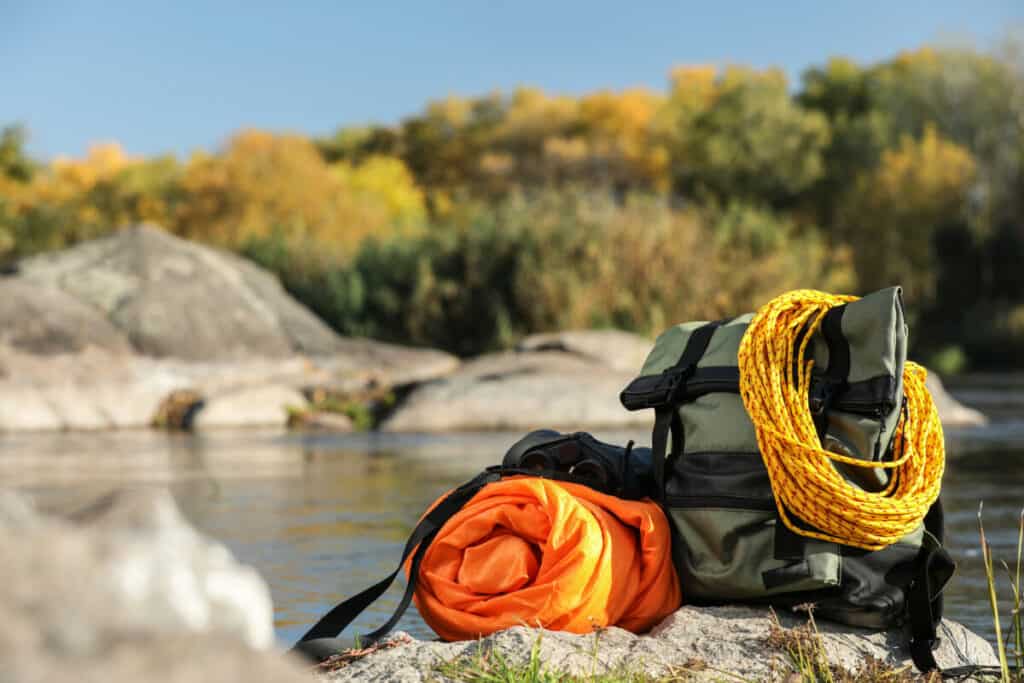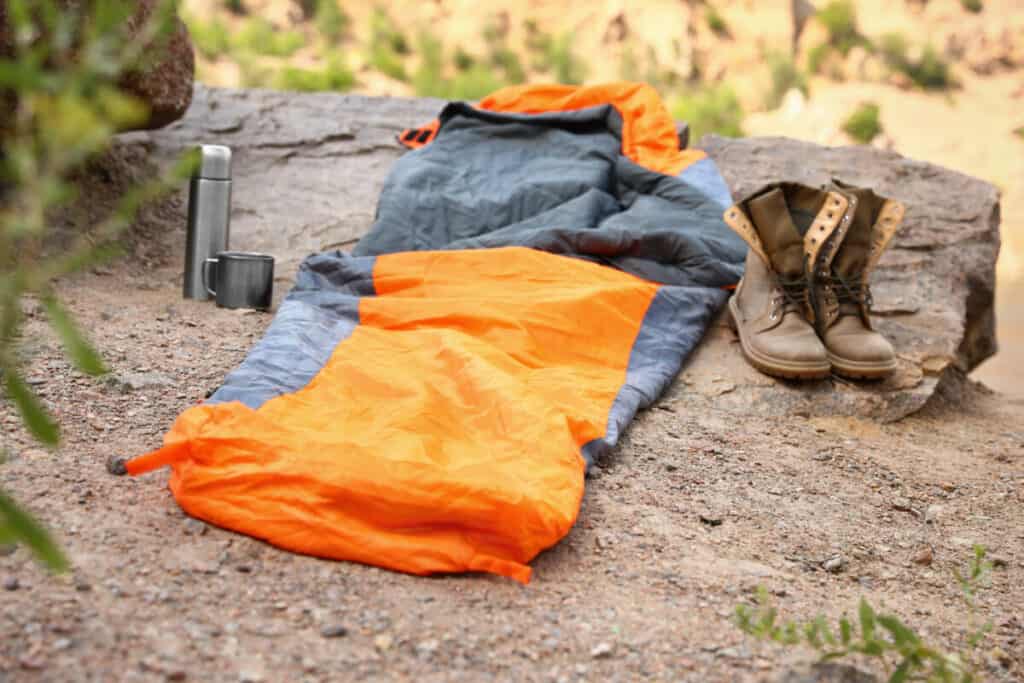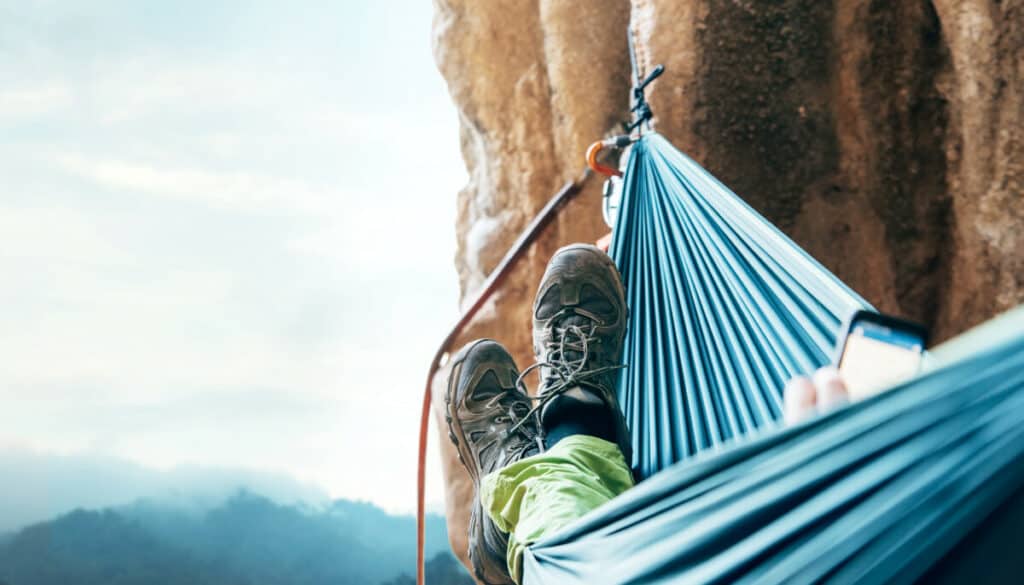
When people talk about “sleeping under the stars,” they typically are speaking metaphorically, camping in a tent. However, camping without a tent is something you can do, and is very popular among hardcore campers and wilderness fanatics. How exactly does it work?
A camper or backpacker sleeping outside without a tent is fully exposed to the elements and wildlife and should therefore plan carefully and consider carrying some gear to reduce this risk. One of the first steps to tent-less camp planning is to check the bivouacking rules in the area you plan to visit.
Adventurous campers can spend the night outdoors in hammocks, bivvy bags, under a tarp, or completely out in the open in a sleeping bag. But how exactly can you ensure your safety while doing so? Are there regulations for sleeping outside without a tent? What things should first-time tent-less campers be aware of? Let’s take a few minutes to address these questions and more.
What is Tentless Camping Called?

The proper name for sleeping outside without a tent is bivouacking, meaning to spend a night outdoors without cover. The term bivouacking comes from an old German word referring to guarding at night, denoting a night watch by the whole army (predictably done without a tent or proper shelter). An increasingly popular trend among extreme campers, bivouacking can be done in a number of ways.
Bivouacking does not have to be without any shelter at all, merely without a proper tent. This means that bivouacking can be done in an igloo, temporary shelter, under a tarp, in a hammock, or just in a sleeping bag. Another popular method of bivouacking is to use a bivvy bag, a bag larger than a straight sleeping bag that is waterproof and intended to keep out wind and even bugs, depending on the kind you get.
The choice to sleep directly under the stars adds a sense of freedom and adventure. Because the goal of bivouacking is typically to achieve an outdoor experience as far removed from civilization as possible, remote areas are most recommended by enthusiasts. However, more extreme areas require more preparation, as we will discuss later.
Pros and Cons of Tentless Camping?

The draw to bivouacking for many people is the ability to experience nature at its rawest, some would say the purest form. Some of the biggest pros of this type of radical camping include the ability to connect to nature on a deep level, as well as the added benefit of not having to carry as much gear. Without a tent, you save room in your pack for other supplies and lighten your overall load.
Camping without a tent really can’t get any simpler. Removing the often bulky shelters allows for quick setup and takedown times. Many people claim there is also a romantic appeal to such a rugged approach. Certainly, it is easier to connect with historical and fictional adventurers while subsisting with similarly basic means.
There are, of course, drawbacks to sleeping outside without a tent, the most obvious of which is the lack of protection from rain, snow and wildlife. Without a tent as a buffer, nature— including the local animals, insects, spiders, and weather— becomes a lot more tangible. Most experienced bivouacked recommend that people who don’t do well with bugs or potential animal friends stick with regular tent-camping.
The weather is also a much bigger factor when camping without a tent. Even for those who bring a tarp or hammock, heavy moisture such as rain or even dew can make the whole trip uncomfortable and even dangerous depending on the temperature. It also is much harder to stay warm without the wind protection of a tent. All of that aside, with perfect weather conditions and lack of wildlife interference, many people simply prefer the added privacy and sense of protection a tent can offer. Without a tent, any passersby may stumble across you sleeping. If traveling in a group, changing clothes can suddenly become challenging.
How to Camp Without a Tent?

Before you set out on your tent-less camping trip, it is important to set a plan beforehand. First, check the weather in your target area before packing. In areas with high humidity or likelihood of rain, consider bringing a tarp or some other preparation against potential moisture. What is the temperature supposed to be like during your stay? Temperature greatly affects what kind of materials you bring. If it seems likely to be colder, bring extra warm clothing or a sleeping or bivvy bag suited for lower temperatures. You may want to opt for a synthetic instead of a down sleeping bag since a synthetic one can provide some insulation when wet.
You should also take time in selecting your sleeping area once you reach the spot. Try to find a place that provides natural protected from the wind and water. For this purpose, it is best to set up camp during daylight hours so you can best assess all potential dangers. If you are going to sleep in the open, tie down loose equipment to avoid them being lost to animals or high winds. Consider keeping footwear inside your sleeping bag, hammock or backpack to prevent unwanted “visitors” like bugs from taking up residence in them in the night. Pulling socks over the opening of footwear is another way to keep out bugs while sleeping.
Am I Allowed to Camp Without a Tent in my Area?
While bivouacking laws vary throughout Europe, there are typically at least a handful of places in which adventurers can camp out completely under the stars. In certain parts of Southern Europe, camping with a tent outside of designated areas can incur a heavy fine. In Scotland in the UK, bivouacking is allowed in most wild places.
Unfortunately, bivouacking is not as widely allowed in the USA and Canada. In many popular campgrounds, bivouacking is actually prohibited, for the safety of campers. However, there are certain areas within national parks called “wilderness areas” where bivouacking is permitted. The US National Parks website lists areas within “bivouacking zones” where tent-less camping and hiking are allowed. In any nation, if you seek to bivouac on private property, it is necessary to require the landowner’s permission first.
